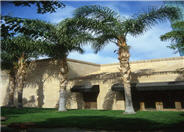
Common name:Queen Palm
Botanical name:Syagrus romanzoffianum
This palm has a very straight trunk to about 50' in height. It has arching, feathery, bright green, glossy leaves that can be 10'-15' long. It is fragile in heavy winds and a fast grower. It will become damaged in temperature below 24 degrees F.
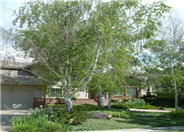
Common name:White Birch, European White Birch
Botanical name:Betula pendula
This medium-size weeping tree will grow to about 40' tall and has a whitish/brown bark with deciduous green leaves. This is one tree that can be planted in a lawn area but is not recommended for drought tolerant designs.
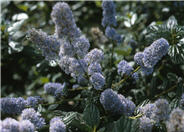
Common name:Carmel Creeper
Botanical name:Ceanothus griseus horizontalis
Carmel Creeper is one of the most popular forms of spreading shrubs. Its glossy oval leaves of 2" are bright green. The tiny, light blue flowers are abundant and form 1" clusters. This shrub benefits from pruning. It does best in well-drained soil with little to no summer water.
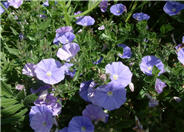
Common name:Dwarf Morning Glory
Botanical name:Convolvulus sabatius
Convolvulus sabaticus is a perennial that grows 1'-2' high, with branches that spread to 3' or more. It produces blue to lavender flowers with blooms of 1"-2" wide. The soft, evergreen leaves are 1/2" to 1.5" long.
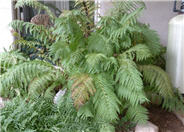
Common name:Giant Chain Fern
Botanical name:Woodwardia fimbriata
The Giant Chain Fern is a large fern that grows 4'-8' tall. It can tolerate full sun but does best in some shade. This fern is native to California and is drought tolerant.
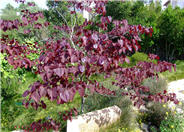
Common name:Forest Pansy Redbud
Botanical name:Cercis canadensis 'Forest Pansy'
This small tree may reach 25' tall and it has dark green/purple leaves that are purple in the fall. Amazing pink flowers bloom in the spring and fill the tree.
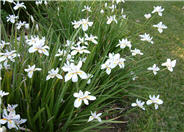
Common name:Butterfly-Iris, Fortnight Lily
Botanical name:Dietes iridioides
This clumping evergreen Iris bears tall, narrow leaves to 30" tall and white flowers marked purple in the center on stalks up to 3' tall. This variety has stiffer, darker foliage than the bicolor form. It requires sun to part shade with little or no summer watering when established.
| Designer: The Plant Nerd | Forest Pansy Redbud Detail |
Photographer: GardenSoft |
Soils and Compost:
Practice grass-cycling by leaving short grass clippings on lawns after mowing, so that nutrients and organic matter are returned to the soil.
Water Saving Tip:
Check your irrigation system for breaks, leaks and problems once a month.
Integrated Pest Management:
Attract, or buy beneficial insects such as ladybugs and lacewings to control pest outbreaks in your garden.
